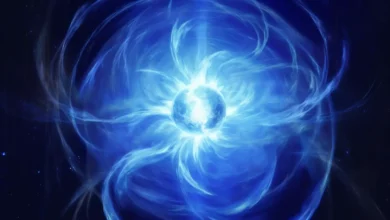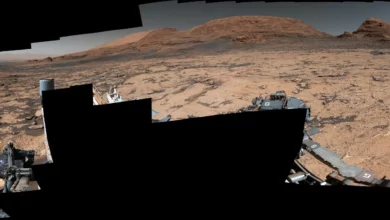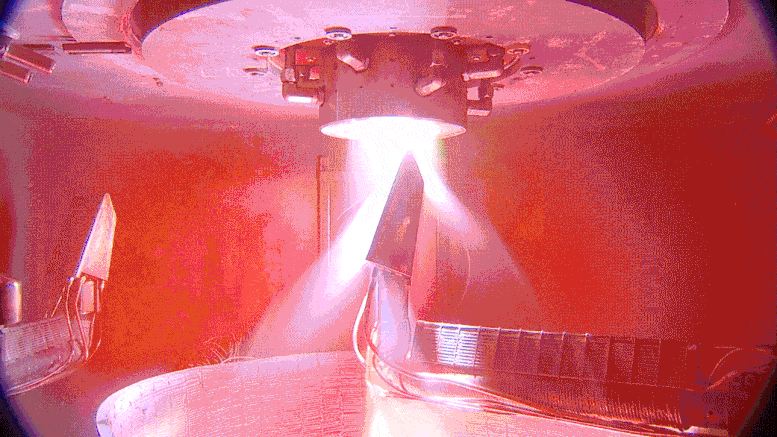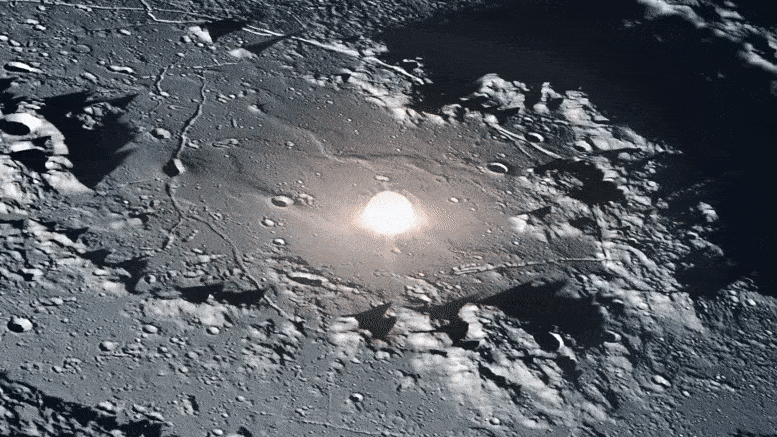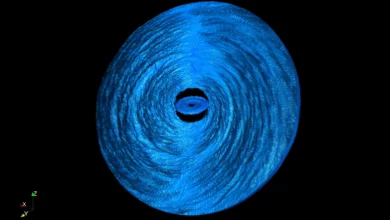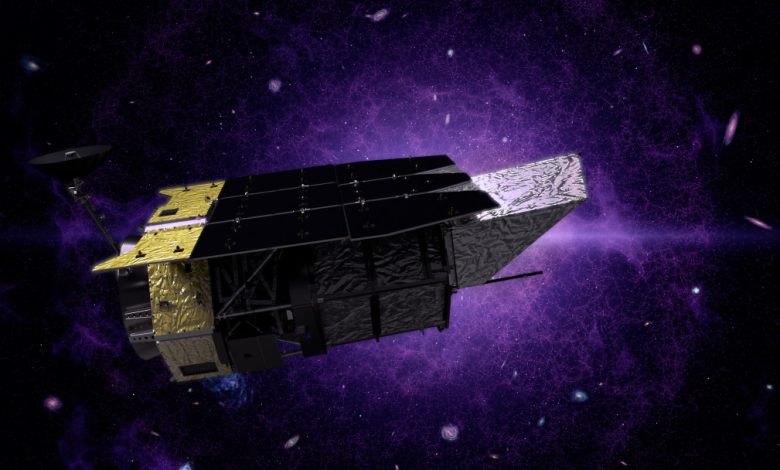
With the James Webb Space Telescope continuing its commissioning phase, NASA is already looking ahead to its next major space observatory, the Nancy Grace Roman Space Telescope. Currently scheduled to launch in 2027, Roman will observe the universe to answer crucial questions needed for the complete understanding of our universe, especially in the areas of dark energy, exoplanets, and infrared astrophysics.
According to a new study published by a team of researchers from the University of Arizona, Roman will be able to use one of its onboard instruments to measure a specific kind of space dust littered around the habitable zones of the planetary system, thereby helping astronomers know more about habitable planets beyond the solar system.
“If we don’t find much of this dust around a particular star, that means future missions will be able to see potential planets relatively easily,” said Ewan Douglas, an assistant professor of astronomy at the University of Arizona in Tucson and the lead author of a paper describing the results. “But if we do find this kind of dust, we can study it and learn all kinds of interesting things about its sources, like comets and asteroids in these systems, and the influence of unseen planets on its brightness and distribution. It’s a win-win for science!”
So how can the telescope detect such fine dust from millions of kilometers away? For this, we need to know more about the zodiacal dust, the small rocky grains largely left behind by colliding asteroids and crumbling comets. In our solar system, it can be found in areas spanning from near the Sun to the asteroid belt between Mars and Jupiter. When observed, it is the brightest thing in the solar system, besides the sun itself.
Exozodiacal dust — zodiacal dust outside the solar system — creates a haze and obscures the view of the planets as it scatters the light from the host star. Being near the star, this dust is very difficult to observe.
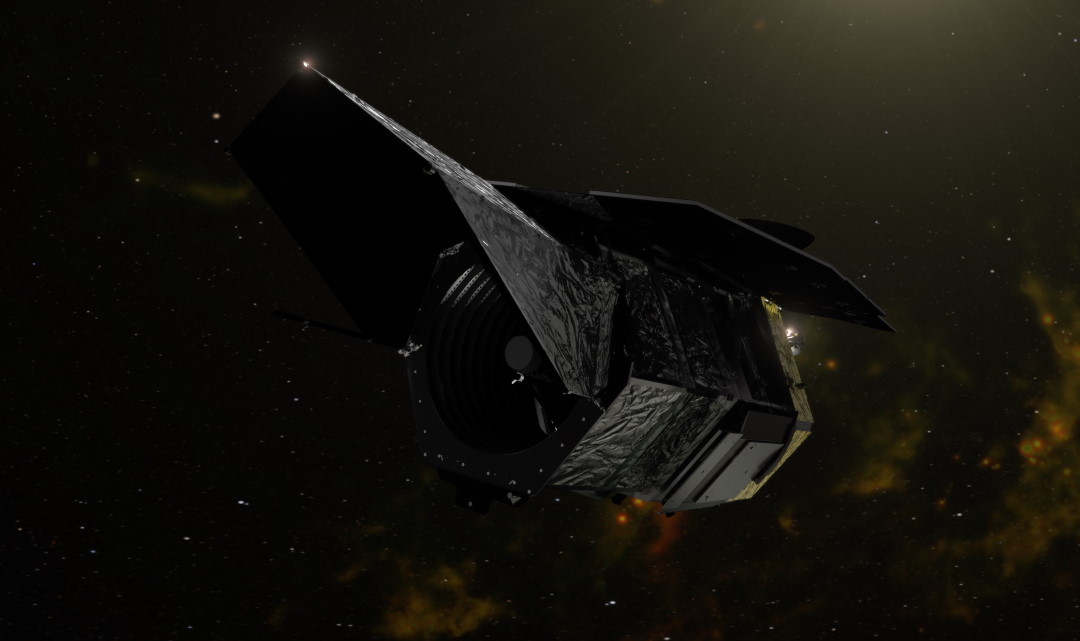
“No one knows much about exozodiacal dust because it’s so close to its host star that it’s usually lost in the glare, making it notoriously difficult to observe,” said Bertrand Mennesson, Roman’s deputy project scientist at NASA’s Jet Propulsion Laboratory in Southern California and a co-author of the paper. “We’re not sure what Roman will find in these other planetary systems, but we’re excited to finally have an observatory that’s equipped to explore this aspect of their habitable zones.”
To counter the glare from the star, Roman will be able to use its Coronagraph Instrument to block out the host star’s light, enabling sensitive measurements to be made of the light reflected by the system’s dust. Ground-based telescopes struggle with such observations because they must look through the Earth’s atmosphere.
“The Roman Coronagraph is equipped with special sensors and deformable mirrors that will actively measure and subtract starlight in real-time,” said John Debes, an astronomer at the Space Telescope Science Institute in Baltimore and a co-author of the paper. “This will help provide a very high level of contrast, a hundred times better than Hubble’s passive coronagraph offers, which we need to spot warm dust that orbits close to the host star.”
Called Hubble’s wide-eyed cousin, Roman’s instruments can image a swath of sky 100 times larger than the Hubble Space Telescope; meaning a single Roman image will provide coverage equivalent to 100 pictures from Hubble. Once deployed and commissioned, the first five years of Roman’s observations will image over 50 times as much sky as Hubble covered in its first 30 years.
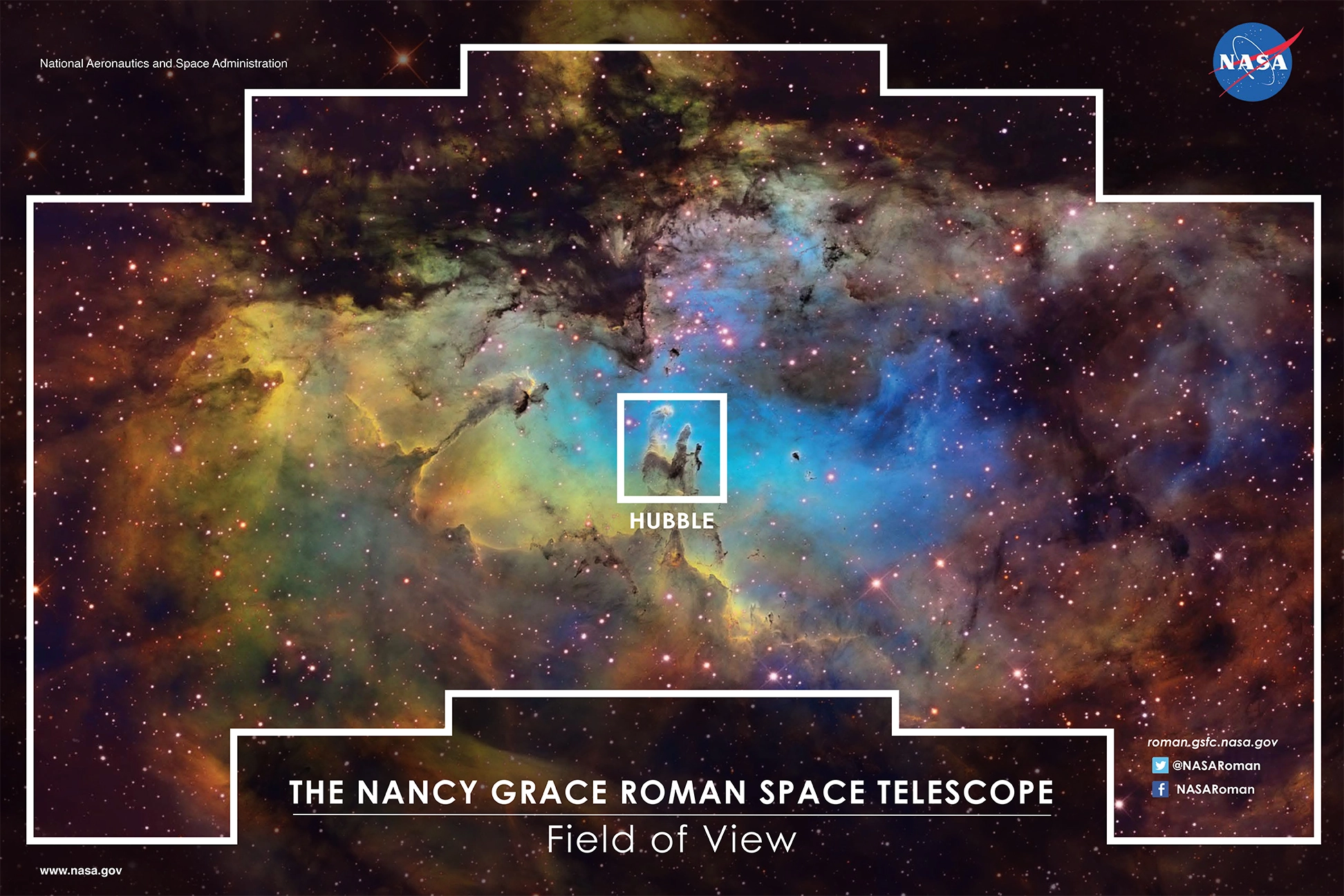
Utilizing one of two telescopes donated to NASA by the National Reconnaissance Office (NRO) in 2012 has drastically affected the program, giving NASA access to a larger mirror than had originally been planned for a fraction of a cost, despite the work needed to convert it for use in astronomical observations instead of the equipment’s original Earth-imaging mission.
In an interview with NASASpaceflight, Julie McEnery, Project Scientist for Roman Space Telescope at NASA’s Goddard Space Flight Center, explained: “Having the opportunity to transition to a much larger primary mirror than we’d originally planned without having a much larger mission cost changed the nature of what we could do with the mission. And once you make the transition to having the much larger mirror, that opened up a huge range of exciting things that we could do with the observatory that might not have been on top of people’s mind with the original plans.”
“It also meant that the capability for everything that you could think of was greatly enhanced. We now have a performance that is equivalent to Hubble’s but over a much larger field of view. Suddenly we now had a much larger number of scientists really excited about what the observatory could do. But the observatory is not able to magically take a much larger number of observations. So we had to figure out how we were going to use the mission to meet more needs. But that’s a lovely problem to have!”
Although the donation from NRO helped, the telescope still needed additional work to prepare it for its role in the Roman Telescope. The 2.4-meter (7.9-foot) primary mirror was re-shaped and re-surfaced by L3Harris Technologies under a NASA contract.
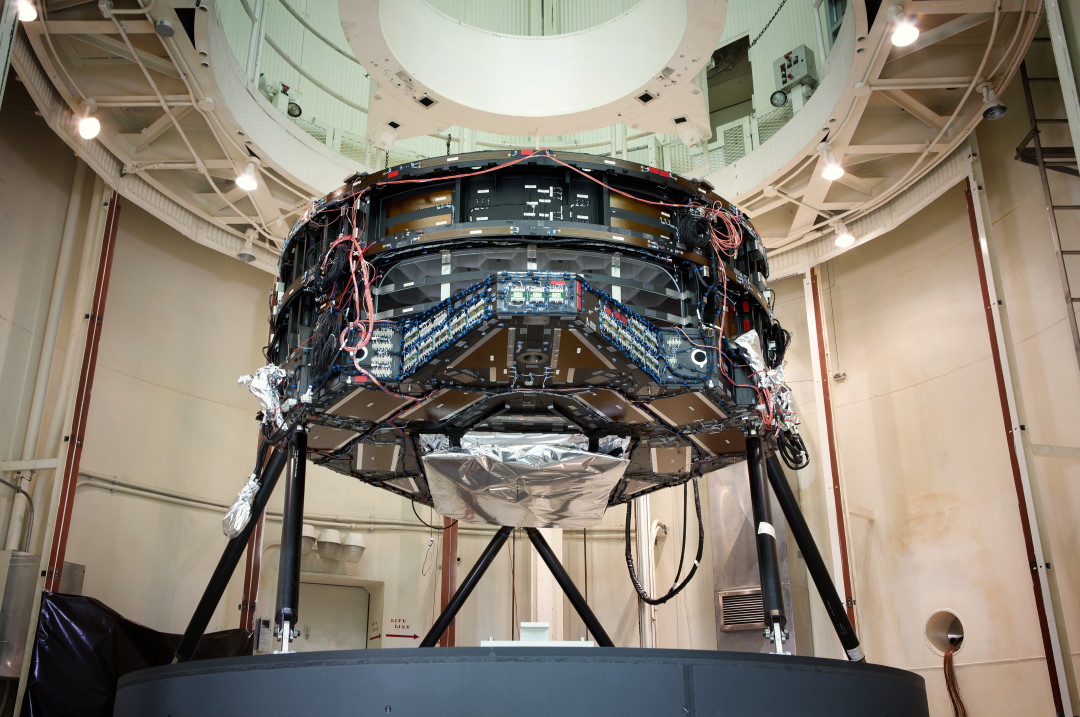
Telescope mirrors are coated with different materials depending on the wavelengths of light they are designed to sense. Hubble was designed to see in the infrared, ultraviolet, and optical, so its mirror was coated in layers of aluminum and magnesium fluoride. The James Webb Space Telescope’s mirror is coated with gold because of its higher reflectivity towards longer infrared wavelengths.
The Roman Space Telescope’s mirror is coated with an extraordinarily thin layer of silver, used because of its ability to reflect light in the infrared to the visible light spectrum. This coating is less than 400 nanometers thick, 200 times thinner than a human hair. Like all advanced telescope mirrors, it is polished meticulously. The average bump on the mirror’s surface is only 1.2 nanometers high, which is twice as smooth as mission operations require.
This mirror is the heart of the telescope as it collects all the light from the distant astronomical bodies and directs it towards the spacecraft’s instruments. Made of ultra-low expansion glass, it is significantly lighter than Hubble despite being the same size.
Instruments
Once the primary mirror collects the ancient light, it will be sent to the telescope’s two onboard instruments: the Wide Field Instrument — which is the primary instrument of the telescope — and the Coronagraph Instrument.
The Wide-Field Instrument (WFI) is a 300-megapixel camera, capable of detecting faint infrared light and capturing a sky bigger than the size of the full moon. It consists of 18 detectors that convert the distant light from the stars to electrical signals, which are further decoded into high-resolution images of large patches of the sky. Right now, the teams are in the process of installing those detectors.
“We have got to be in one of the most exciting parts of the mission right now. We have just started putting, so we’ve got 18, you know, when you see the picture of Roman, it’s kind of got that little Space Invader thing going on,” said Julie McEnery.
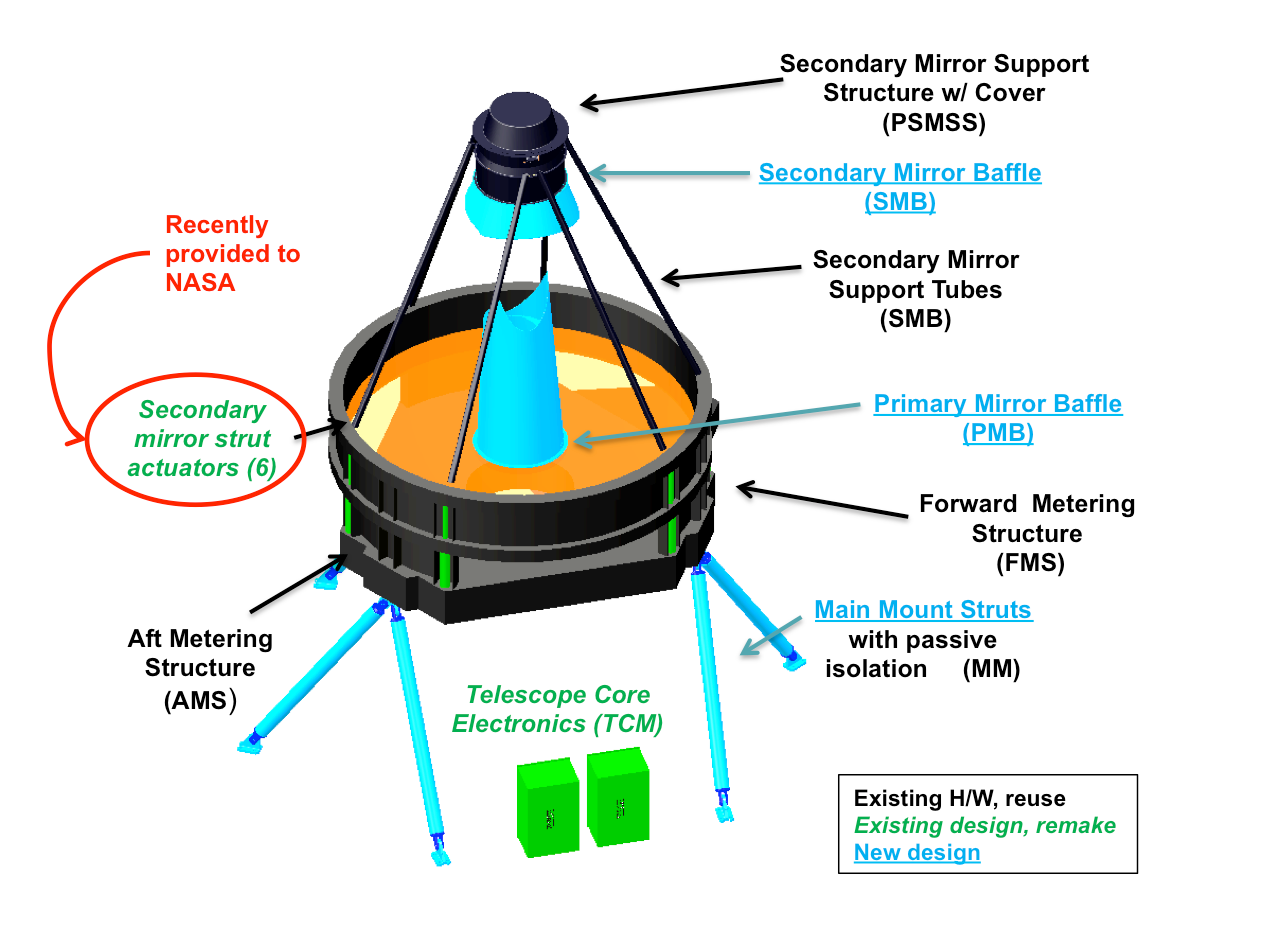
“And that’s the focal plane of the Wide-Field Instrument. That picture has 18, there’s 18 individual detectors. We’ve started to put the first six detectors, that’s the ones in the middle row, the flight detectors, into the flight plate. So we’re actually building the real thing. And we’ve already tested all of those flight detectors. We’ve been characterizing their performance. They’re working great. They don’t just meet the specifications, they all exceed them. Everything is really starting to come together.”
The second instrument in the Coronagraph. Roman will be the first mission to use a coronagraph designed specifically to study exoplanets, in space. It will demonstrate technology that will allow astronomers to image directly planets in orbit around other stars by greatly reducing the glare from the host star. Roman’s will be the most powerful coronagraph ever flown, capable of observing planets almost a billion times fainter than their stars. Known as “Starglasses”, it works using a system of masks, prisms, detectors, and self-flexing mirrors to block out glare from distant stars.
“It’s kind of awesome. I think of it as like magic with physics. Because you’re using destructive interference of light to create the dark hole. But then as you create the dark hole, the rest of the light is going somewhere, and you use that to inform how the deformable mirror needs to respond to correct for deviations of the wave front as it’s coming in.”
“It’s a difficult thing to do. It’s been difficult to make the deformable mirrors work the way we want them to.”
Project History
The Nancy Grace Roman Space Telescope, previously known as Wide-Field Infrared Survey Telescope or WFIRST, has had a rocky history, with delays and cost growth affecting the project. It was first introduced in the report of the 2010 Astronomy and Astrophysics Decadal Survey, a 10-year plan created by the US National Academies to outline scientific missions and goals related to astronomy.
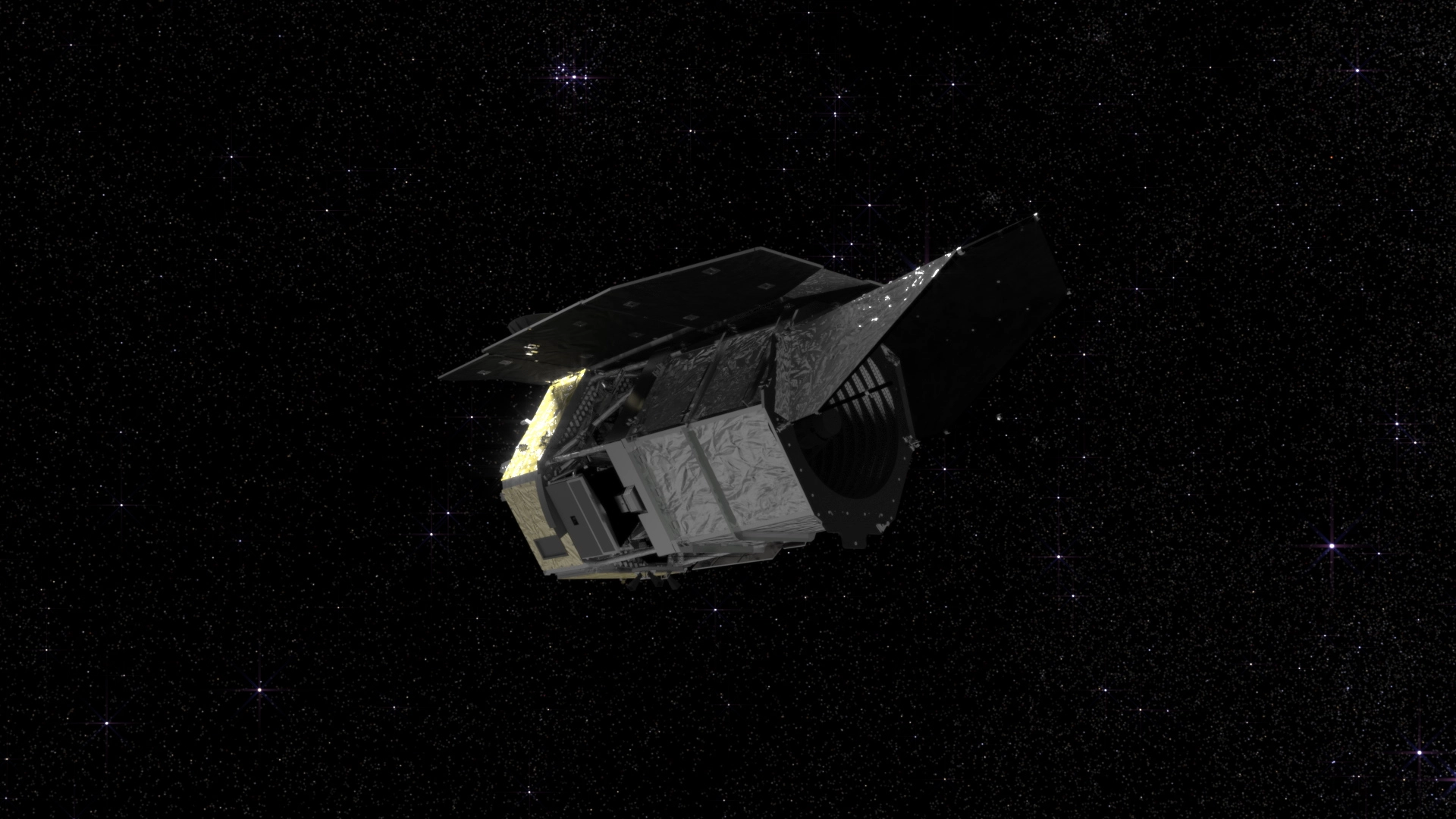
WFIRST was identified as a top-rank priority for a large space mission, with NASA’s Then-Administrator Charles Bolden directing the Science Mission Directorate to continue pre-formulation activities by beginning the development of the telescope’s design. This was carried out by the Astrophysics-Focused Telescope Assets (AFTA) science definition team. By 2014, the team had announced the two instruments which will be onboard the telescope.
By December 2015, NASA had announced the selection of its Formulation Science Investigation Teams for the telescope. These worked with NASA and Project Teams on science requirements, mission design, and scientific performance predictions for the mission. By October 2017, NASA received its findings from the team and awarded its first contract to Ball Aerospace for the Wide Field Instrument.
On August 28, 2019, Roman Telescope successfully passed its preliminary design review, meaning that the project had met the performance, schedule, and budget requirements needed for the finalization of its design as it moved to the next stage of the development. By September 29, 2021, the Roman Space Telescope had passed its critical design review, signaling the end of all design work and the beginning of the assembly phase.
While the telescope progressed further on the technical front, it experienced resistance from the previous US administration. Several attempts were made to terminate this project, citing the delays and cost growth of the James Webb Space Telescope. Lawmakers were hesitant to proceed with another multi-billion dollar space telescope until Webb had been launched and deployed successfully. Despite the administration’s recommendations, Congress continued to fund the Roman Space Telescope’s development and the project promises much for astronomers once the observatory reaches orbit later this decade.

